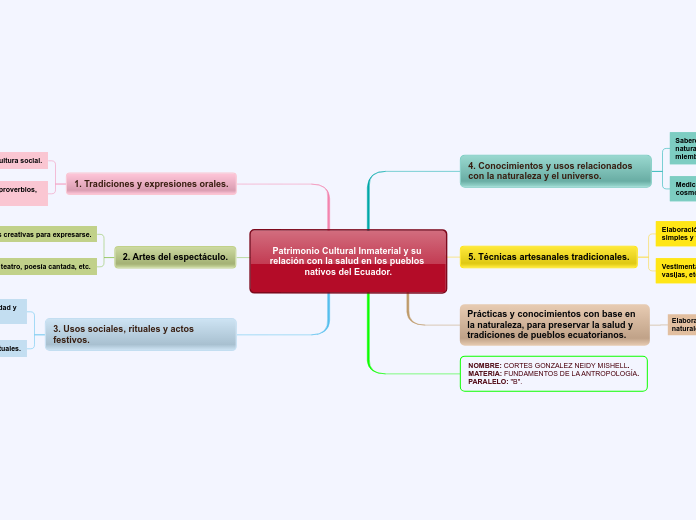по Mishell Cortes 5 лет назад
403
Patrimonio Cultural Inmaterial y su relación con la salud en los pueblos nativos del Ecuador.

по Mishell Cortes 5 лет назад
403

Больше похоже на это
The part of speech is a category to which a word is assigned according to its syntactic functions. In English the main parts of speech are noun, pronoun, adjective, determiner, verb, adverb, preposition, conjunction, and interjection.
A preposition is one of the most exciting parts of grammar. A preposition is used to describe the location of something in relation to something else.
A group of words used with the force of a single preposition is called phrase preposition.
An interjection is used to express emotion in a sentence.
Think of other interjections!
A numeral is a word or phrase that describes a numerical quantity.
Some theories of grammar use the word 'numeral' to refer to cardinal numbers that act as a determiner to specify the quantity of a noun, for example the 'two' in 'two hats'.
A conjunction is a word like 'if' 'but' or 'and' which is used to connect sentences or clauses together.
A pronoun is a word that can be used in place of a noun, typically after the noun itself has already been stated.
A noun is defined as a person, place, thing or idea. Proper nouns always begin with a capital letter. Common nouns, which are general words, such as 'cars,' are not capitalized.
A verb is an action word or 'doing' word that signifies movement in some way.
A participle is a verb form that can be used as an adjective or to create a verb tense. There are two types of participles: Present participle (ending -ing) and Past participle (usually ending -ed, -d, -t, -en, or -n).